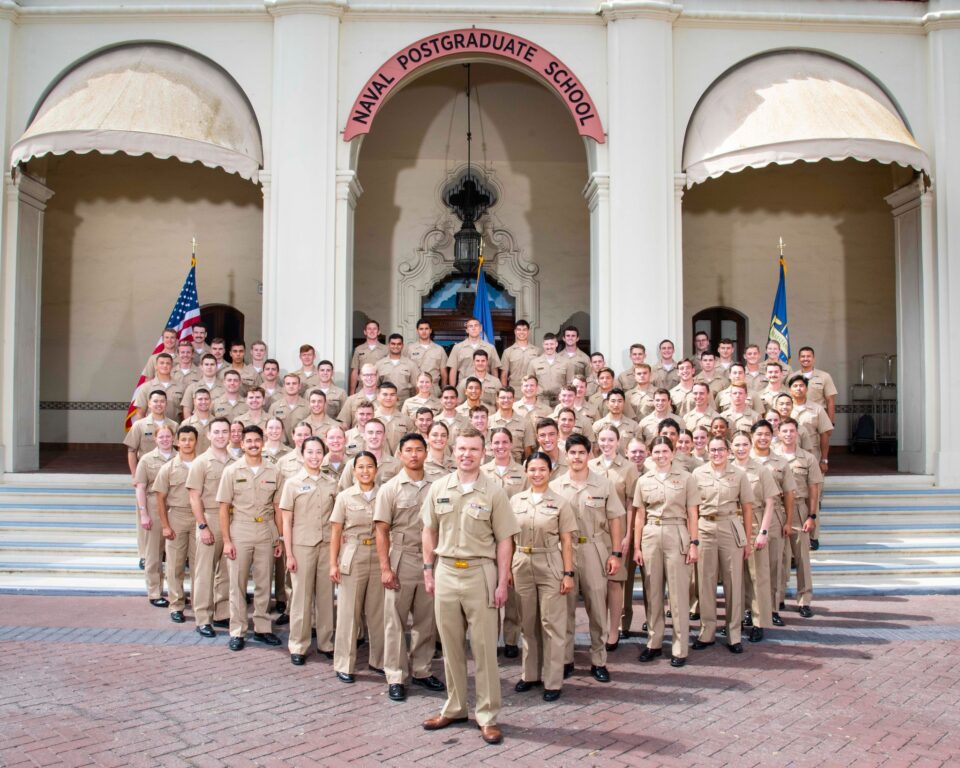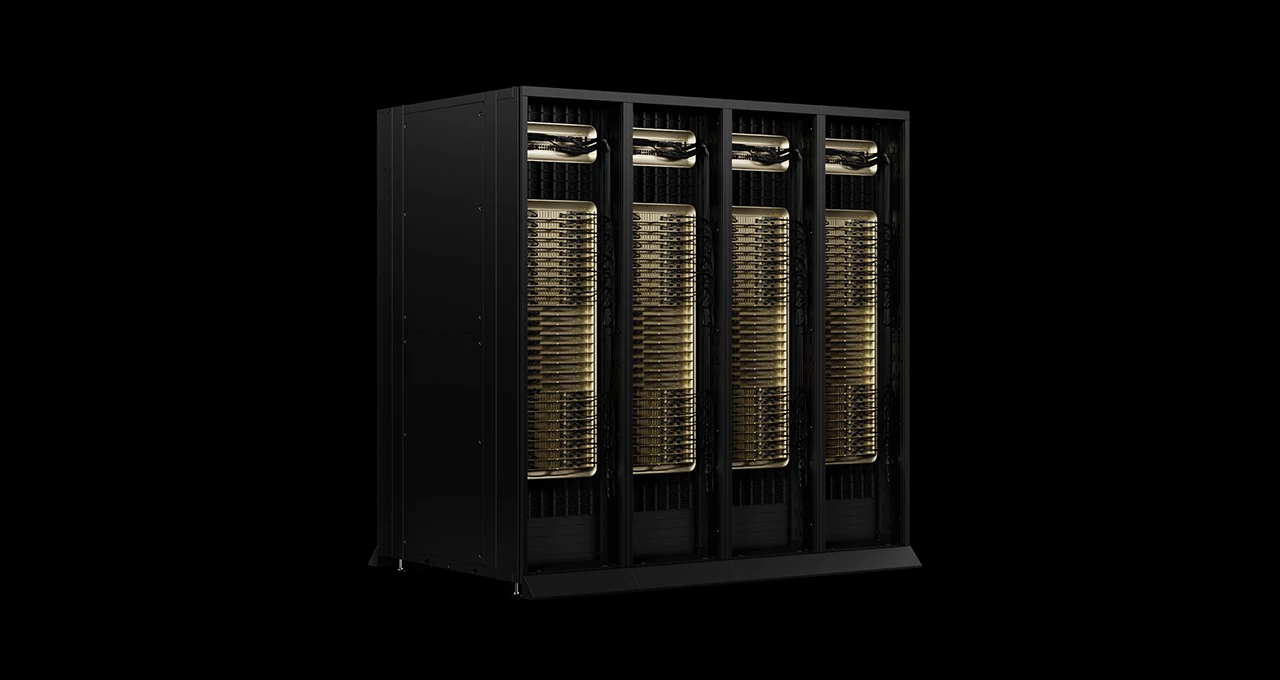Along the Pacific Ocean in Monterey, California, the Naval Postgraduate School (NPS) is making a splash all the way to Washington, D.C.: It’s using artificial intelligence to solve operational challenges while educating tomorrow’s leaders in AI skills.
Like Silicon Valley, it’s not uncommon for NPS, the U.S. Navy’s flagship academic graduate university, to hold hackathons, creating advances in autonomy, space operations, ocean research, decision tools and much more.
Supporting those efforts, NVIDIA has granted an NVIDIA DGX GB300 system to help NPS play a leading role in the U.S. government’s AI race. Supercharging its AI efforts, NPS will use an NVIDIA DGX GB300 and NVIDIA Mission Control software to support over 1,500 in-resident students, 600 faculty and thousands of external partners, with plans to expand its infrastructure in the future.
The system is being put to work empowering the new NVIDIA AI Technology Center at NPS for applications in everything from complex mission planning to autonomous systems simulations to disaster recovery so that U.S. service members and partners are better positioned strategically to lead with AI.
“First, with this DGX GB300 system, we should be able to support model training and inference capability with our own NPS GPT,” said retired Col. Randolph Pugh, NPS AI Task Force lead and AI Portfolio director. “It will give us on-premises capability for added privacy to provide a generative AI large language model tool for people to use.”
NPS has partnered on many technical challenges with nonprofit organization MITRE, which develops technologies and solutions for the government and public interest with federally funded research and development centers.
Sometimes that involves transferring technology, such as powerful weather models that NPS can develop further. Studying the sea in support of naval operations has always been a focus of NPS.
Tackling AI Strategic Challenges With a Three-Computer Solution
MITRE recently shared with NPS its Advanced Simulation for Planning and Enhanced Navigation (ASPEN) simulation framework, which it developed on the NVIDIA Omniverse platform. ASPEN provides a high-fidelity digital twin environment for simulating — using the NVIDIA Isaac Sim framework for robotics — with unmanned underwater vehicle (UUV) navigation, obstacle avoidance and real-time decision-making under uncertain conditions like currents, low visibility and acoustic interference.
MITRE’s ASPEN 3 Network brings in real-world data from its BlueTech Lab, an indoor pool maritime test facility, which helps validate autonomous systems and actions in water.
ASPEN is used to develop environmental models around wind, temperature, salinity, current and water depth. It works with models for sonar, inertial measurement unit devices, compass readings, lidar and cameras. Computing for UUVs runs on NVIDIA Jetson AGX modules at the edge to process data.
MITRE harnesses an NVIDIA DGX SuperPOD to train large language and weather forecast models in its Federal AI Sandbox. The AI Sandbox is a secure environment for federal agencies to experiment, prototype and deploy advanced AI.
MITRE’s use of accelerated computing — across NVIDIA Jetson AGX, Omniverse and DGX — encompasses NVIDIA’s three-computer solution for developing physical AI.
Accelerating Weather and Environmental Modeling at NPS With NVIDIA DGX GB300
Understanding and accurately predicting ocean operational environments remains critical to effective naval planning and readiness. Understanding the environment that the Navy operates within is important to help keep ships and their crews safe at sea.
After training the foundational models on DGX GB300, NPS can run simulations using NVIDIA Isaac Sim to help understand environments where the Navy operates and further train in ASPEN.
“We need to predict environmental changes by understanding the atmosphere, the sea surface, subsurface and seabed for maximum mission effectiveness and crew safety,” said Pugh.
ASPEN works with physics-based models and can incorporate real-time vehicle position and orientation data for hardware-in-the loop model training and mission prediction.
Modeling the World and Beyond
ASPEN offers efficient generation of propagation environments for sensor modeling with NVIDIA fVDB, an open-source, GPU-accelerated deep learning framework. It’s used for processing massive 3D datasets with spatial intelligence, enabling generative physical AI by accelerating 3D machine learning tasks for applications such as digital twins.
The NVIDIA fVDB framework can be harnessed to build high-fidelity digital twins of many different environments. This requires processing datasets from sources such as telemetry, sonar, satellite data and other sensor reports to create virtual representations of the ocean floor, water column, atmosphere and even space. Using these kinds of AI simulation environments enables NPS to detect and understand what’s normal and what’s not.
“For example, should a spacecraft lose its capability to maneuver, or something crashes into something, it creates debris, and we’d like to predict where every little thing goes because the uncontrolled satellites or debris fields can be extremely dangerous,” said Pugh.
Developing Real-World Naval Applications While Learning AI
Across all curricula at NPS, AI is enabling its military students to earn their graduate degrees and conduct hands-on applied research with AI by developing real-world applications that benefit the Naval and Joint Force.
“We can spin up something born out of an independent study or a hackathon project or funded research, with faculty leveraging students as part of that, and we can connect them with the fleets that are going to fund them or operationalize them,” said U.S. Navy Captain Michael Owen, NPS AI Task Force Deputy.

NVIDIA is also providing resources through the NVIDIA Deep Learning Institute and has established an NVIDIA AI Technology Center at the university’s Monterey campus to give the faculty at NPS cutting-edge resources that enhance the institution’s unique defense-focused graduate education and research.
“We’ve appreciated the access to the NVIDIA Deep Learning Institute for its instructor toolkits,” Pugh said. “It’s proving critical in helping NPS educate tomorrow’s leaders in AI.”
Watch the GTC Washington, D.C., keynote from NVIDIA founder and CEO Jensen Huang and explore sessions.
